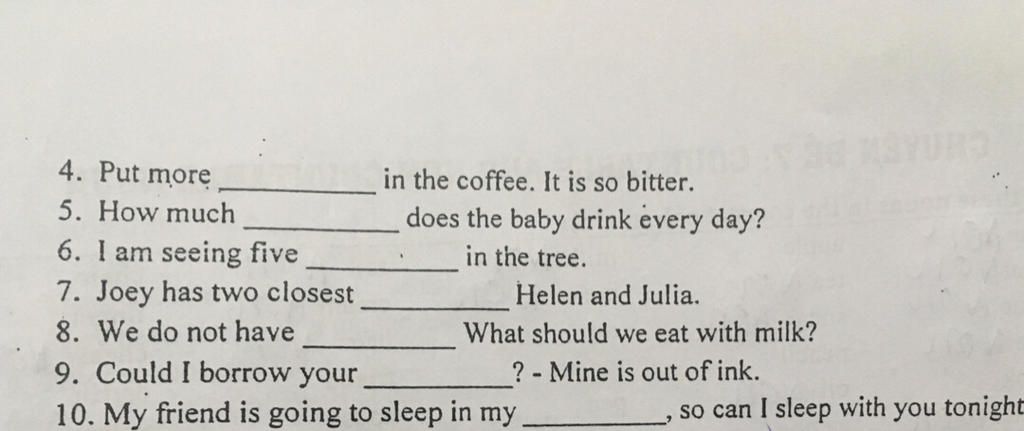what do u think now? hay what are you thinking now vậy ạ
Hãy nhập câu hỏi của bạn vào đây, nếu là tài khoản VIP, bạn sẽ được ưu tiên trả lời.



1. Đặt mục tiêu cụ thể cho từng môn học (ví dụ: Toán đạt 9.0, Anh văn giao tiếp tốt…).
2. 30 phút tập trung thật sự còn hơn 2 tiếng học mà đầu để đâu đâu.
3. Mỗi ngày chỉ cần học nghiêm túc 1–2 tiếng là đủ để giỏi dần nếu duy trì đều đặn.
4. Ai cũng từng không hiểu, từng sai – học giỏi là do dám hỏi và sửa lỗi.
5. Không cần phải thông minh lắm, chỉ cần không bỏ cuộc.
6. Mỗi ngày giỏi hơn 1% → sau 1 năm bạn giỏi hơn 37 lần.
Cho bạn 1 câu nói mà bố tớ luôn dặn mong cậu cố gắng tớ luôn dựa vào câu nói của bố mà cố gắng :
"Học giỏi không phải là kết quả của sự thông minh bẩm sinh, mà là thành quả của từng buổi tối ngồi xuống bàn học dù rất mệt, từng lần kiên trì làm lại bài sai dù rất nản, và từng lần dám hỏi khi không hiểu dù rất ngại. Người học giỏi không phải là người luôn biết tất cả, mà là người không bao giờ ngừng học hỏi."

Dưới đây là phần tổng hợp 3 thì: Hiện tại đơn (HTĐ), quá khứ đơn (QKĐ), hiện tại tiếp diễn (HTTD), áp dụng vào các câu cụ thể:
a) The class starts at seven fifteen.
→ HTĐ: dùng cho thời gian biểu, lịch trình cố định.
b) Alice waited for you yesterday.
→ QKĐ: có từ “yesterday” → hành động xảy ra trong quá khứ.
c) He usually takes a taxi to the airport.
→ HTĐ: "usually" là trạng từ chỉ thói quen.
d) My mother bought meat and vegetables last Sunday.
→ QKĐ: "last Sunday" là dấu hiệu của quá khứ.
e) Did he write a letter 4 days ago?
→ QKĐ: câu hỏi ở thì quá khứ, có “ago”.
f) Does the sun set in the West?
→ HTĐ: sự thật hiển nhiên trong tự nhiên.
Dưới đây là phần tổng hợp 3 thì: Hiện tại đơn (HTĐ), quá khứ đơn (QKĐ), hiện tại tiếp diễn (HTTD), áp dụng vào các câu cụ thể:
a) The class starts at seven fifteen.
HTĐ: dùng cho thời gian biểu, lịch trình cố định.
b) Alice waited for you yesterday.
QKĐ: có từ “yesterday” → hành động xảy ra trong quá khứ.
c) He usually takes a taxi to the airport.
HTĐ: "usually" là trạng từ chỉ thói quen.
d) My mother bought meat and vegetables last Sunday.
QKĐ: "last Sunday" là dấu hiệu của quá khứ.
e) Did he write a letter 4 days ago?
QKĐ: câu hỏi ở thì quá khứ, có “ago”.
f) Does the sun set in the West?
HTĐ: sự thật hiển nhiên trong tự nhiên.
nhớ tick nhe.


+Nắm vững các thì cơ bản
+Ghi nhớ công thức và dấu hiệu nhận biết
+Thực hành thường xuyên
+ Sử dụng các công cụ hỗ trợ.
Chúc bạn học tốt!
Một số mẹo giúp bạn chia thì dễ hơn:
+ Dựa vào trợ động từ (VD: usually, last night, ...)
+ Tìm kiếm các dấu hiệu nhận biết của các thì
+ Nắm vững ngữ pháp, ngữ cảnh để chia thì
Có được những mẹo này, bạn sẽ chia thì dễ hơn nhé! Chúc bạn học tốt!

tìm số \(\overline{abc}\), hay tìm chữ số: a; b; c em ơi?


thinking
are you thinking